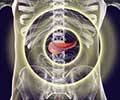Obstruction of LV inflow (mitral stenosis) For either systolic or diastolic heart failure the onset and progression of signs and symptoms can be quite variable and often do not correlate with the severity of LV dysfunction. Symptoms
Diastolic dysfunction due to
Abnormal LV relaxation
Ischemia
Hypertrophy
Cardiomyopathies
High output states
Volume overload
Aging
Diabetes mellitus
Amyloidosis
Pericardial disease
with mild infrequent symptoms for months or years. As the disease progresses symptoms often become more frequent and require regular medical intervention. The patient who finds physical exertion difficult often reduces the level of physical activity and experiences progressive skeletal muscle deconditioning. With severe disease, the patient is symptomatic at rest. Eventually, the heart develops a greater propensity for ventricular arrhythmias. Sudden death from ventricular arrhythmia is a common mechanism of death for HF patients with progressive LV dysfunction.





Comments
what is the explanation for orthopnoea in CCF
FOR BEST INFORMATION ABOUT ACNE TREATMENTS.
Physical inactivity is a major risk factor for heart disease and stroke and is linked to cardiovascular mortality. Regular physical activity can help control blood lipid abnormalities, diabetes and obesity. Aerobic physical activity can also help reduce blood pressure. The results of pooled studies show that people who modify their behavior and start regular physical activity after heart attack have better rates of survival and better quality of life. Healthy people as well as many patients with cardiovascular disease can improve their fitness and exercise performance with training.
http://www.insideheart.com/
very informative article !!!